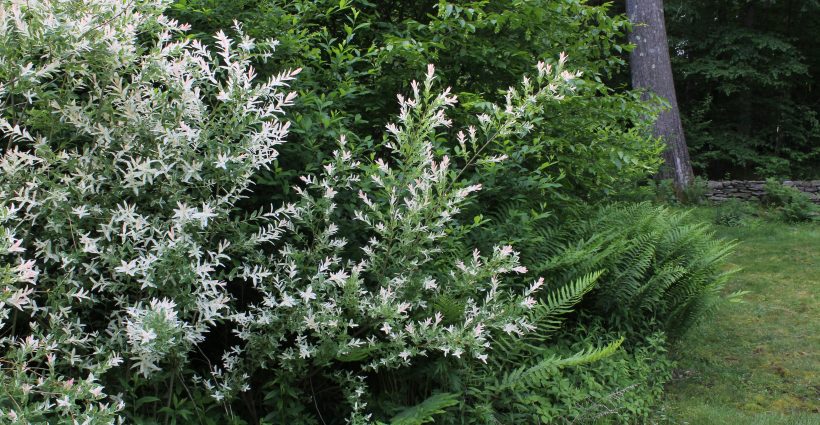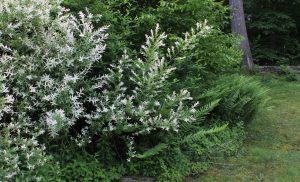designed for the way women work.

Willow: A Plant That Loves Water
Category: Plant Ideas & Info, Presenting "The Curious Gardener"
One of the most widely known willows is pussy willow. The botanical name is Salix discolor and it’s native to North American wetlands. Its catkins are as soft as a kitten’s paws and it’s one of the first plants to signal spring is nigh. The botanical genus for willow plants is Salix and there are about 400 water loving species in the genus.
Where I live in Pawling, NY we are situated in the 6,000 acre Great Swamp Watershed, designated as a Class I wetland by the NY State Department of Environmental Conservation and a National Historic Landmark. It stands to reason that many of the plants native to this area are water loving plants like willow.
The Willow’s appetite for water is so voracious it’s recommended that you take care if planting them near underground water pipes or a septic system because their roots can be invasive. If planted next to a small pond I’ve been told they can drain the pond. Their winding root system also makes them a good plant for erosion control.
Willows have shallow roots so trees are not suited to exposed, windy sites. Where I grew up in Connecticut we had a storm rip through our property and take down 3 giant willows in front of our eyes. I will never forget the destruction caused by that storm and the sight of the willow trees with 3’ wide trunks lying on their sides with their roots in the air.

Weeping willows are a species of willow tree with drooping limbs. Like all willows they grow fast and can reach their mature height of 30 -50’ tall and wide in 15 years, growing 24 inches or more a year. Willows are desiduous so they lose their leaves in the winter, but are one of the first to show signs of life in the early spring.
A willow I use in my landscape, Salix Integra, is a very showy shrub native to China and Japan. Cut it back in the early spring and you will be rewarded with shoots of new growth in white tinged with salmon pink for a couple of months. Leaves are variegated and later in the season the colors will become more muted. The cultivar I have is called ‘Hakura Nishiki’ and it’s great if you need a pop of color in front of dark foliage or you want a privacy screen. It is sometimes grown as a standard with a single thin trunk and a lollipop top for a more formal setting. I prefer when the branches arch in a more free form manner than when they’re clipped in a round ball.
Willow branches can be used as a rooting hormone for other plants. Put stems in water for 24 hours. After that pour the water on seedlings or plants that are trying to root. Willows themselves root easily and grow ‘like weeds.’
If you are looking for a plant that is well suited to wet, boggy soil and grows quickly, willow is an easy and ornamental addition to any home garden.




Glad to find your gardening gloves at Tuesday Morning’s Fort Walton Beach, FL.
The strong, but thin leather palmed glove allows me to have adequate dexterity in gloves to work long periods of time.
In the past, I inevitably would remove gloves before completing my tasks, damaging my hands, nails & forearms after-all.
I have hand-washed & machine washed them after heavy use and allowed to air dry.
The gloves continue to retain their soft integrity.
Now, I am overjoyed to find the website tag on the product and ability to order additional pairs going forward.
I am interested to see the remainder of products and gardening information.
I have one Silex Integra in my yard and would love for it to spread. Will the branches root themselves or are there better ways to propogate this plant to create a willow hedge.